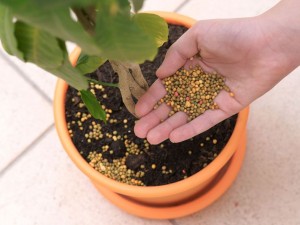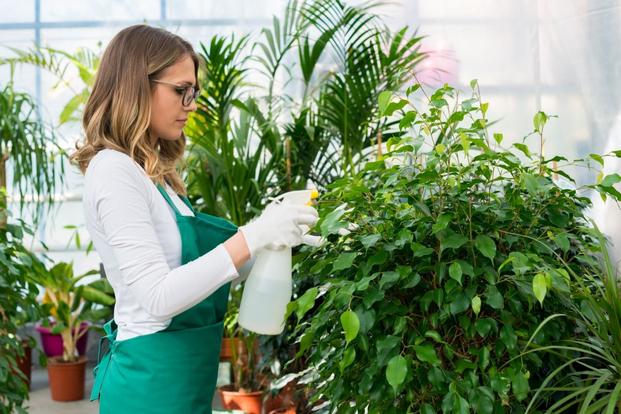 The physiological role of each nutrient is very different. So e.g. B. by nitrogen the leaf- and affect stem formation, it is also required for protein synthesis. A lack of nitrogen manifests itself in poor development of the shoots and leaves, with yellow-green leaves and unsatisfactory flower formation. On the other hand, plants over-fertilized with nitrogen show dark green colored leaves and spongy tissues; the time of flowering is delayed and the resistance to damaging influences is reduced.
The physiological role of each nutrient is very different. So e.g. B. by nitrogen the leaf- and affect stem formation, it is also required for protein synthesis. A lack of nitrogen manifests itself in poor development of the shoots and leaves, with yellow-green leaves and unsatisfactory flower formation. On the other hand, plants over-fertilized with nitrogen show dark green colored leaves and spongy tissues; the time of flowering is delayed and the resistance to damaging influences is reduced.
Phosphorus plays a crucial role in the life processes within the cell. He favors the flowers- and fruiting, accelerates maturation and, by strengthening the tissue, increases resistance to fungal pathogens and unfavorable climatic influences. The plants show a lack of phosphorus by weak, playful growth, blue-green to reddish-purple discoloration of the (usually green) leaves, defective bud formation and insufficient development of the flowers. An excess of phosphorus rarely causes damage, because the plant has a storage capacity for this element. However, excess phosphorus can result in a disruption of the harmony of the nutrients, indem with. B. Trace elements are determined. Does this affect the effectiveness of the iron?, then chlorotic phenomena appear, Glutos. h., the leaves turn yellow-green or yellow. This disorder, known as chlorosis, is sometimes seen in ericaceous plants (Azaleas, Of camels) and observed in the cup primula.
The potassium has a swelling effect on the plasma of the cells, This promotes water absorption and reduces evaporation. By strengthening plant tissues, it increases resistance to disease. Potassium deficiency can be recognized by it, that the plants are slowing down in growth, poor bud set and stunted flowers, often wither too, because their water balance is disturbed. Discolouring and curling of the leaves, later drying up and falling off the plant are characteristic signs of potassium deficiency. With excess potash, which also affects the nitrogen unfavorably- and magnesium supply of the plants, the leaves are pale green and the stems brittle.
